Recently released photos and video show the initial prototype of the KF-X next-generation indigenous fighter — which is being built by Korea Aerospace Industries, or KAI, in Sacheon — starting to take shape. KAI is also receiving assistance from Lockheed Martin on the project, which has an estimated total value of $7.4 billion, and is aiming to roll out the completed prototype by April of next year.
So far, the bulk of the fuselage and the wings have been completed and major subassemblies are now in the process of being mated together on the production line. The fuselage seems to have been completed in three major components: forward fuselage including the cockpit, center fuselage ‘barrel’ with integral wings, and a tail unit, to which the flying surfaces have not yet been added.

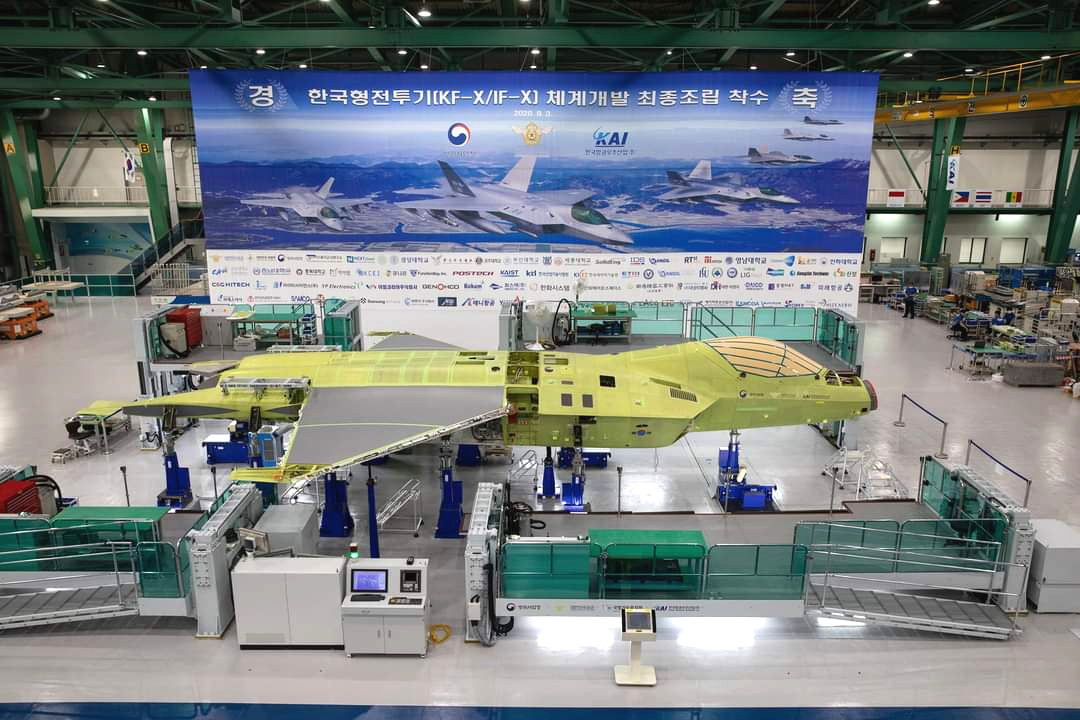
asdsa

Judging by the color of the components, most of the structure seems to comprise composite materials. This would parallel the approach taken in other new-generation fighter designs, in which advanced composite construction helps with reducing radar signature, while also providing a light and strong airframe.
Like its new-generation counterparts — the Chinese FC-31, the Indian Advanced Medium Combat Aircraft (AMCA), and the Turkish TF-X — the KF-X is a twin-tailed multi-role fighter with a configuration broadly similar to the F-22 Raptor or F-35 Lightning II. All these designs share the outwards-canted twin tails, low-observable shaping, and parallel alignment of edges that are characteristic of modern ‘stealthy’ fighters. The shaping of the KF-X’s inlets is especially reminiscent of those on the F-22.
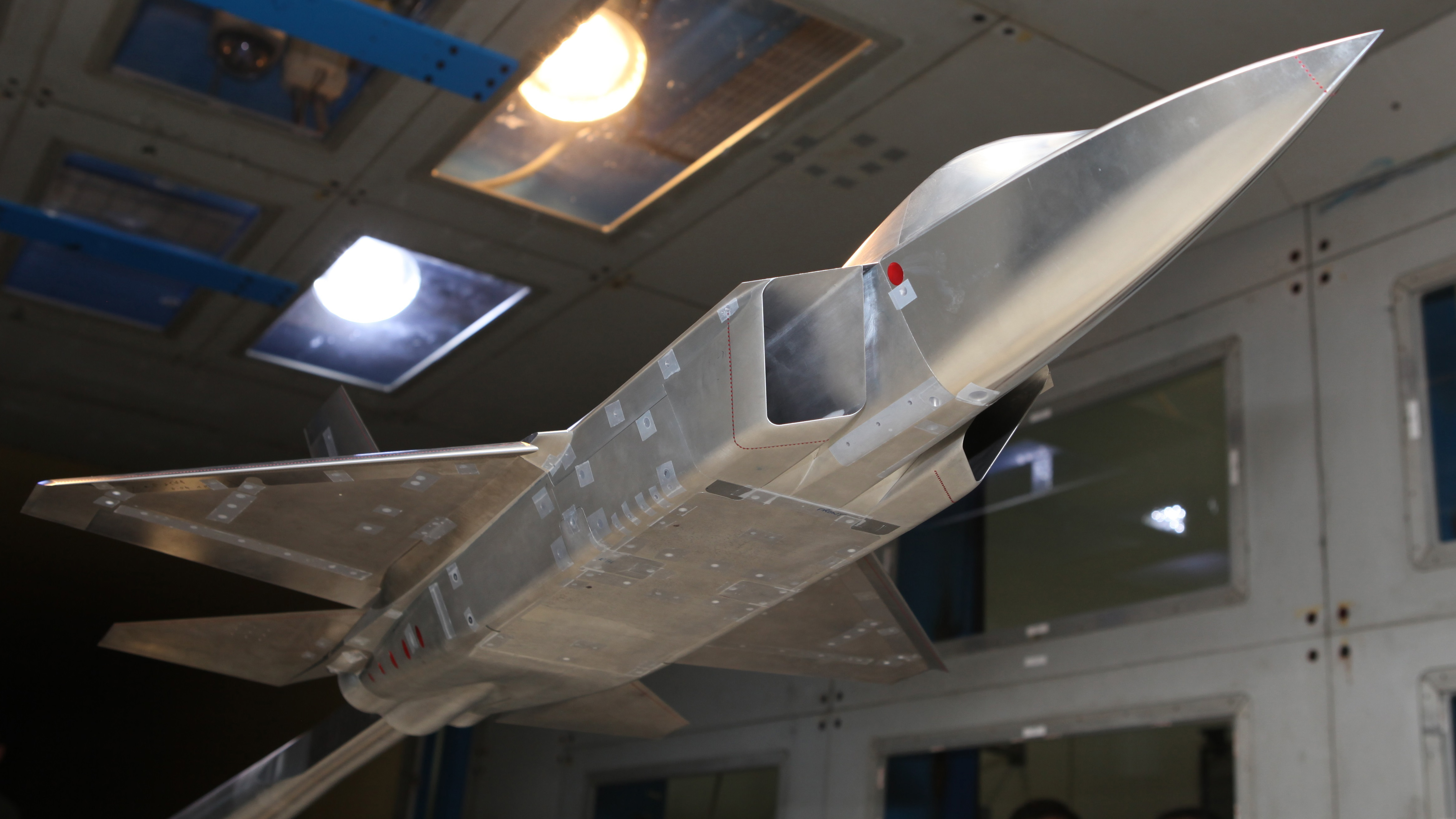
From the outset, the KF-X was planned to offer better kinematic performance than the F-16C. KAI has stated it hopes the jet will have a maximum speed of 1,370 mph and a ferry range of 1,800 miles, as well as a total payload capacity of 17,000 pounds.
The two engines that will give the jet its power have yet to be installed in the prototype. These powerplants will be a specially adapted version of the 22,000-pound-thrust-class GE Aviation F414 known as the F414-GE-400K. GE Aviation delivered the first F414-GE-400K for the KF-X in May 2020. In a press release, the company said the KF-X “will deliver significantly greater mission capability, extended combat radius and longer lifespan compared to current aircraft.”
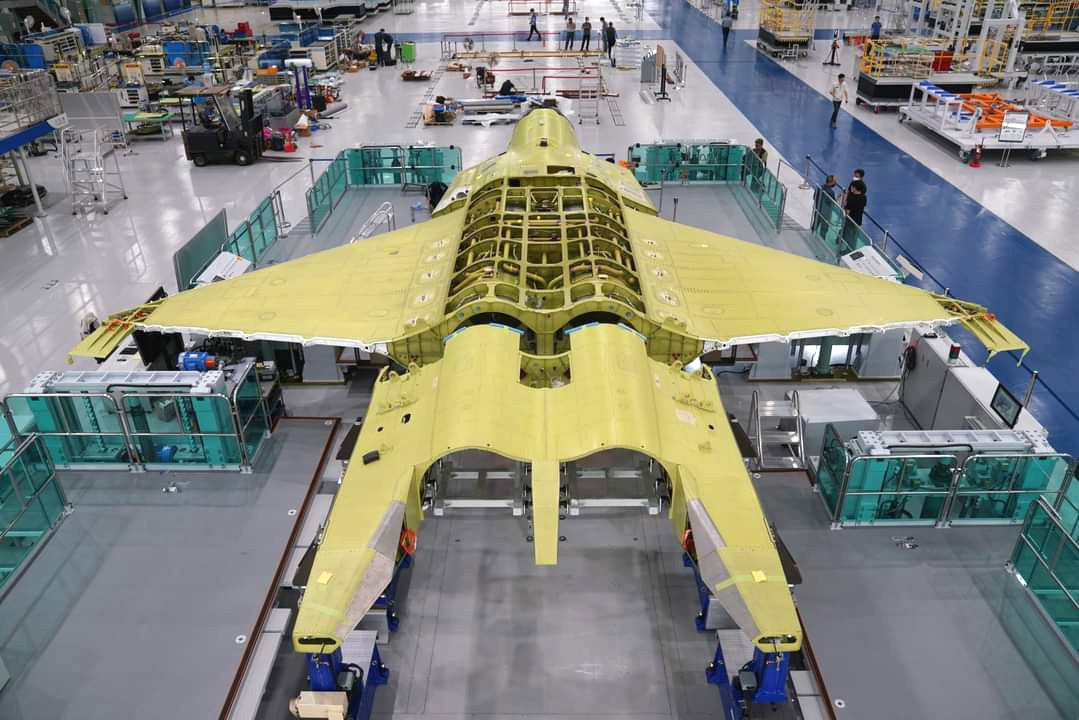
GE Aviation will provide South Korea with 240 F414 production engines plus spares. The same basic powerplant is used in the F/A-18E/F Super Hornet and EA-18G Growler, Sweden’s JAS 39E/F Gripen, and is set to power the Indian Tejas Mk 2.
Photos showing the cross-section through the center fuselage of the KF-X reveal troughs in the bottom of the aircraft for semi-recessed weapons carriage. In its initial form, the KF-X is not planned to feature internal weapons bays, but these are expected to be incorporated in later developments of the jet.


All told the pictures and video footage show that KAI has made substantial progress since it last revealed a picture of the prototype under construction that the company released in July 2020. At that time, only portions of the front and center fuselage sections were shown.

Current plans reportedly call for the initial-production Block 1 variant to be completed without internal weapons bays, but to be compatible with them, suggesting there will be enough space within the fuselage to allow for their later introduction — presumably without requiring too much invasive structural work. Subsequently, the Block 2 versions are expected to be completed with internal bays from the outset.
As for armament, in November 2019, Europe’s MBDA Missile Systems announced it had been awarded a contract to integrate its ramjet-powered Meteor beyond-visual-range air-to-air missile (BVRAAM) with the KF-X. “We’re very pleased to mark this next and important step in our partnership with KAI and the Korean Defence Acquisition Program Administration,” said Éric Béranger, CEO of MBDA, at the time. “South Korea is a strategic market for MBDA, and we’re proud that Meteor will be providing KF-X with the world’s most potent air-to-air capability.”
The Meteor BVRAAM will be complemented by the infrared-guided IRIS-T short-range air-to-air missile produced by Germany’s Diehl Defence. In addition to those missiles, the aircraft will have also have a built-in 20mm M61 Vulcan cannon firing through a port on the top of the fuselage on the lefthand-side behind the cockpit.
Earlier this year, South Korea selected the precision-guided munitions and guidance kits that it plans to integrate with the KF-X. These comprise the Boeing GBU-31 and GBU-38/B Joint Direct Attack Munitions (JDAM), GBU-54/B and GBU-56/B Laser JDAMs, and GBU-39/B Small Diameter Bomb I (SDB I), and the Raytheon GBU-12 Paveway II bomb, plus Textron’s CBU-105 Wind Corrected Munitions Dispenser (WCMD). All of these weapons are already in use with the Republic of Korea Air Force (ROKAF), but the integration process with the KF-X is expected to take six or seven years to complete.
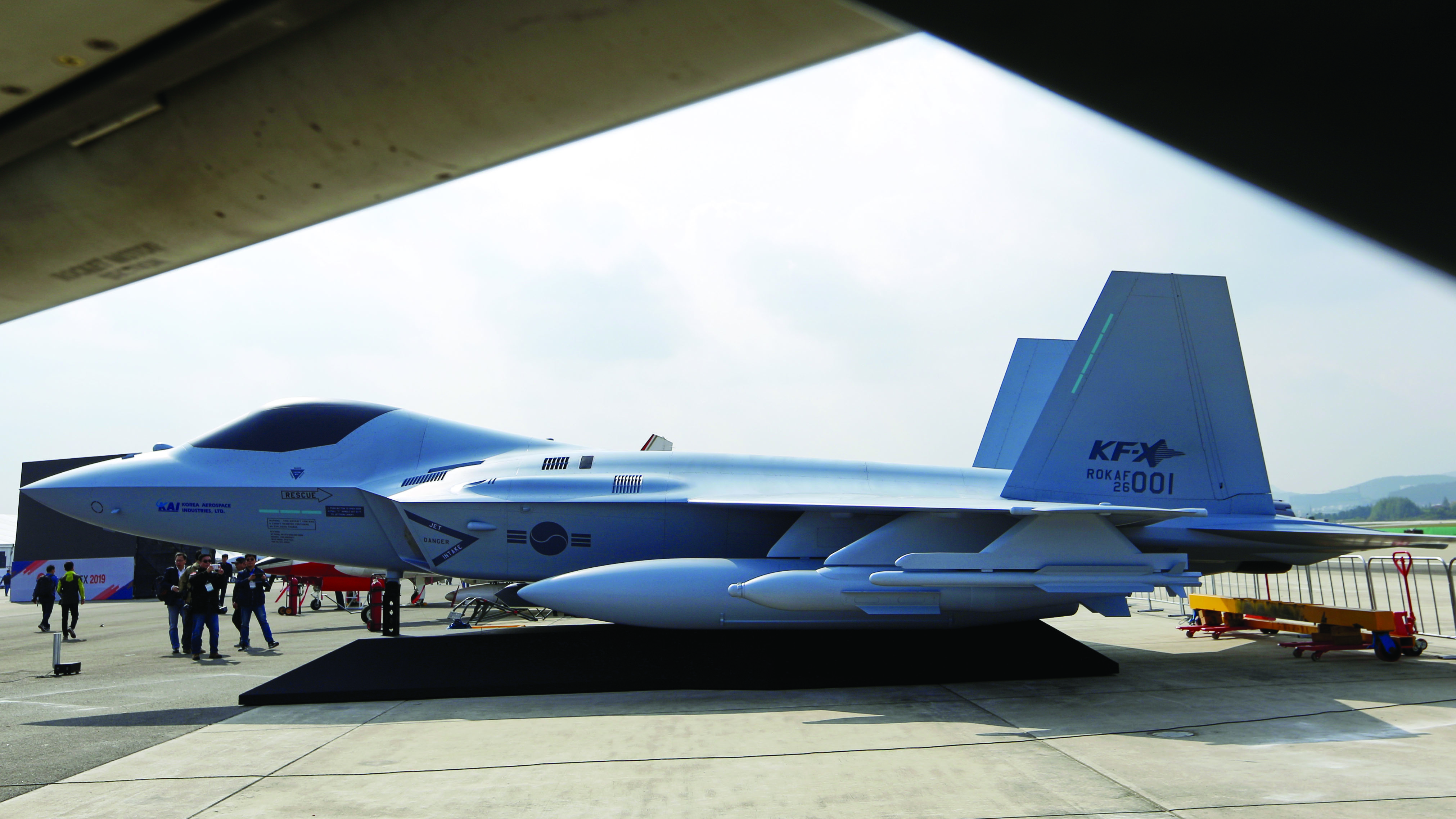
Concept artwork of the KF-X has also depicted the jet with external targeting and navigation pods — something that is generally omitted from the design of many fifth-generation fighters, such as the F-35, to improve their stealthy characteristics. However, being able to carry these podded systems, which may have capabilities not found in the aircraft’s built-in sensors, could be valuable for when the aircraft does not need to operate in its most stealthy configuration. This could also allow for the more rapid integration of sensors or other systems with new or improved functionality without major changes to the airframe.

The KF-X’s active electronically scanned array (AESA) radar is being developed in South Korea by Hanwha Systems. This company has in turn contracted Israel’s Elbit Systems to provide terrain following/terrain avoidance technology for the jet’s avionics suite. Flight tests of a technology-demonstration fighter radar have taken place in both Israel and South Korea using Elta’s Boeing 737 testbed, in a project that involves Hanwha, Elta Systems, and South Korea’s Agency for Defense Development (ADD).
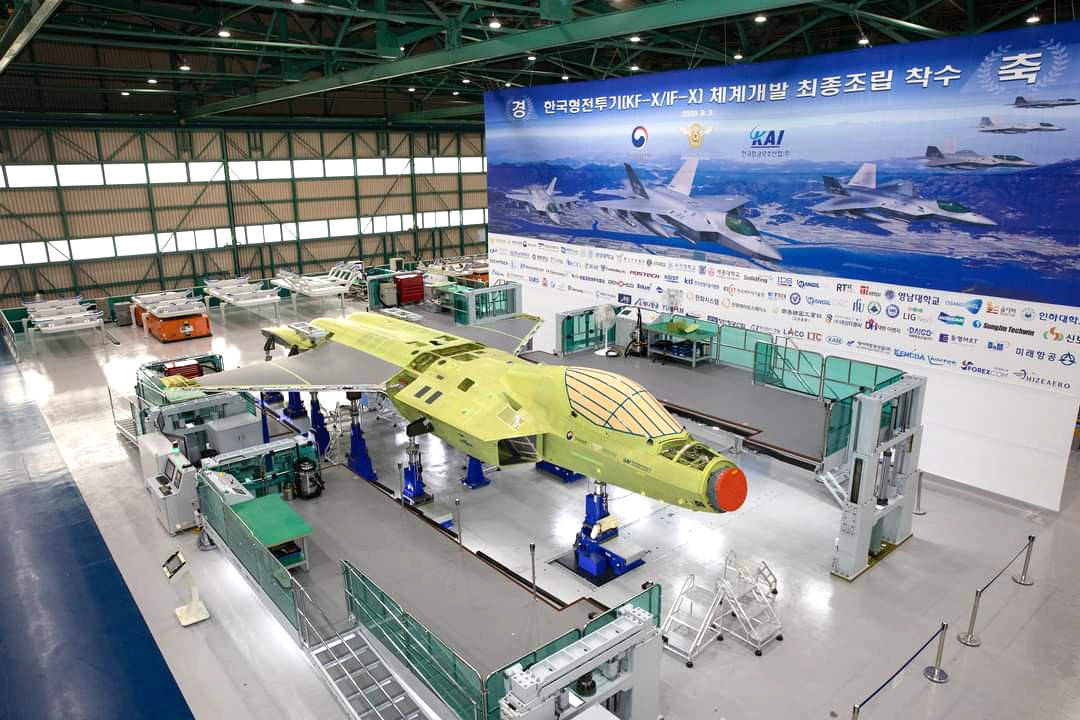
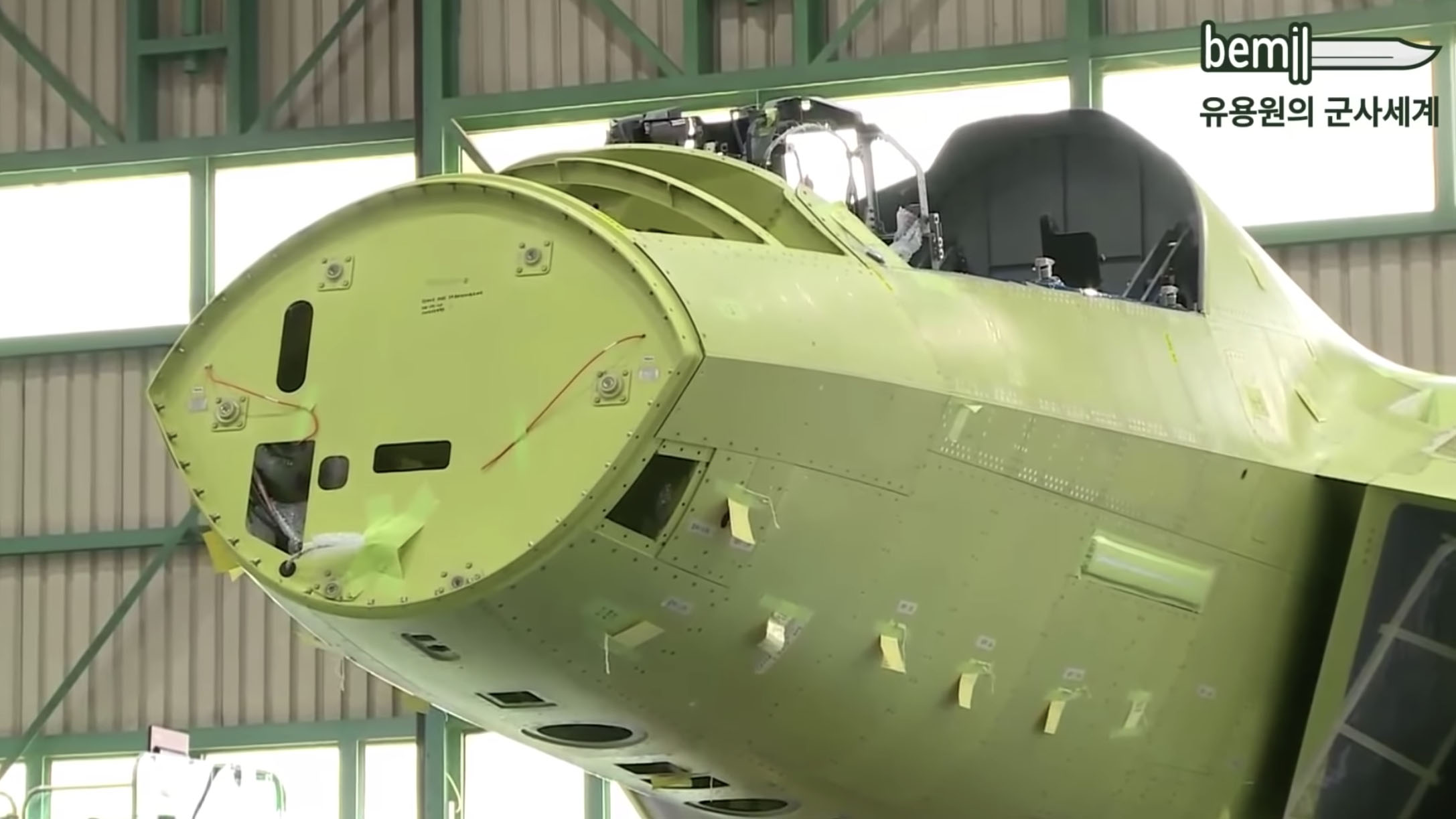
Hanwha is also developing an infrared search and track (IRST) system for the jet. IRST offers an alternative to radar when it comes to spotting and tracking hostile aircraft, including stealth types. These systems, which are also very useful in environments where there is a high risk of electronic warfare jamming, are becoming increasingly standard on fighter jets, either built into the plane or in a podded form. You can read more about the benefits they offer in this recent War Zone feature.
Development of the KF-X first began in January 2016, with the preliminary design getting was finalized in June 2018. A critical design review of the fighter was completed in September 2019 and a mock-up then debuted at the Seoul International Aerospace & Defense Exhibition that took place the following October.
In late 2019, it was confirmed that KAI had begun building the first prototype for the KF-X and the firm now aims to roll out the completed aircraft in April 2021. Production of six prototype fighters and 15 F414 engines are due for completion by the end of 2021 and these will then be used in the flight-test program that’s expected to finish by 2026. A first flight is planned for May 2022. The six prototype fighters are anticipated to comprise four single-seaters and two twin-seaters.
If all goes to plan, Seoul expects to issue a production contract for the KF-X as early as 2024, leading to deliveries of the Block 1 variant in 2026, before the test campaign is wound up.

The ROKAF has a requirement for 120 KF-Xs, intended to replace the existing F-4E Phantom II and F-5E/F Tiger II fleets by 2032. It remains to be seen whether South Korea will be able to meet that goal. Developing a new fighter from scratch is a daunting prospect and one that’s often beset by delays and cost overruns — especially when low-observable technology is involved.
South Korea does appear to have laid out an incremental approach to KF-X that is less ambitious at the outset with an eye toward rapidly bringing the first iteration to the prototype stage. The choice not to include fully internal weapons bays in the first block of jets inherently makes them less stealthy, but is an indication of a potentially less risky developmental approach.
The South Koreans are then expected to pursue further block upgrades that would incrementally reduce the fighter’s radar signature. This, of course, runs the risk of increasing costs in the long term to realize the aircraft’s full potential.

In addition, overall, KAI hopes that it could sell more than 350 examples of its indigenous fighter, including a number on the export market. There are long-standing hopes that Indonesia could buy 50 of the new jets, with that country’s PT Dirgantara Indonesia also working as an industry partner on the project. Originally, Indonesia committed to paying for 20% of the total KF-X development costs, however, Jakarta has since sought to renegotiate its involvement in the program and has reportedly got behind in its payments.
KAI has enjoyed notable export success with its T-50, TA-50, and FA-50 Golden Eagle series of advanced trainers and light combat aircraft. Like the KF-X, these designs received assistance from Lockheed Martin, are powered by General Electric engines, and, in their most advanced forms, feature Israeli-made Elta radars. While the company will hope to replicate some of this success with the KF-X, the U.S.-supplied engines mean it will be subject to International Traffic in Arms Regulations (ITAR) restrictions, which could block export sales if they are seen to go against Washington’s foreign policy objectives.
There are other factors, too, that should accelerate the KF-X fighter’s path to service entry. By selecting European-made air-to-air missiles as the initial armament, and an Israeli co-developed radar, Seoul avoids having to wait to receive permission from Washington to integrate U.S.-made weapons and avionics, which can be a lengthy process. Fielding the jet initially without internal weapons will also speed things up, allowing weapon launch and separation trials from the bays to be postponed until the Block 2 version is ready. Finally, potential foreign involvement — together with design cooperation from the outset — could also help get the jet into service quicker.
Whatever the case, KAI certainly seems to be making significant progress in the construction of the initial prototype KF-X and the program seems to be one to watch when it comes to new stealth fighter developments around the world.
Contact the author: thomas@thedrive.com
